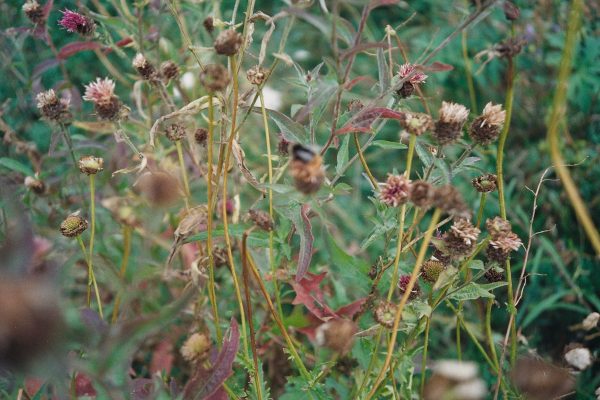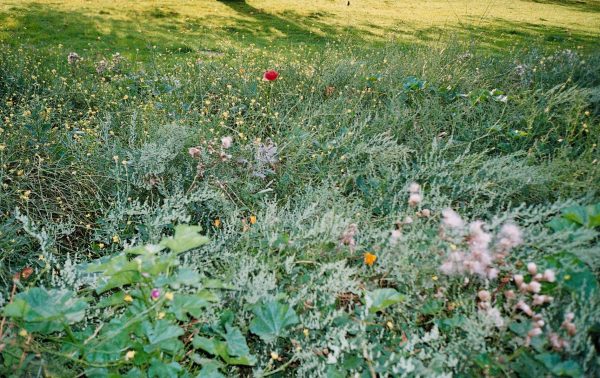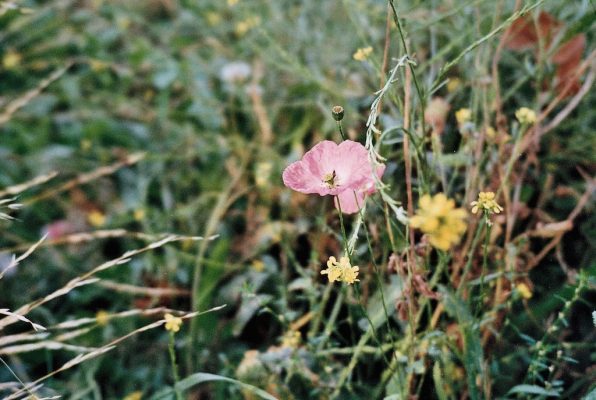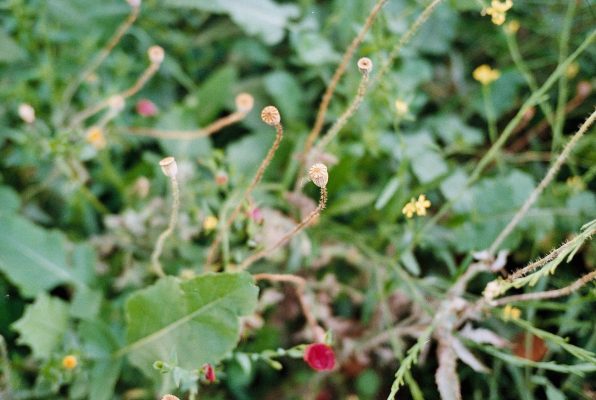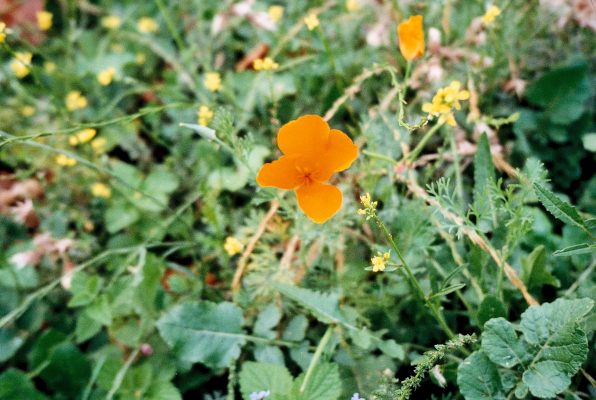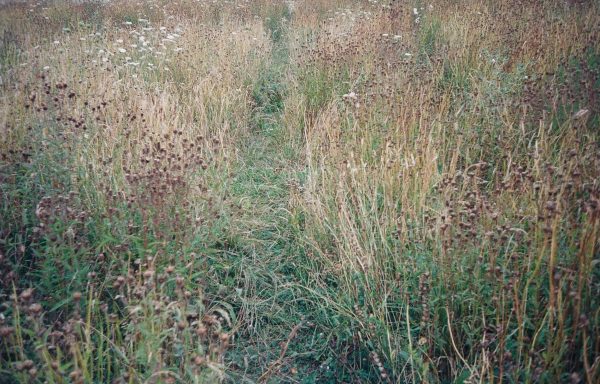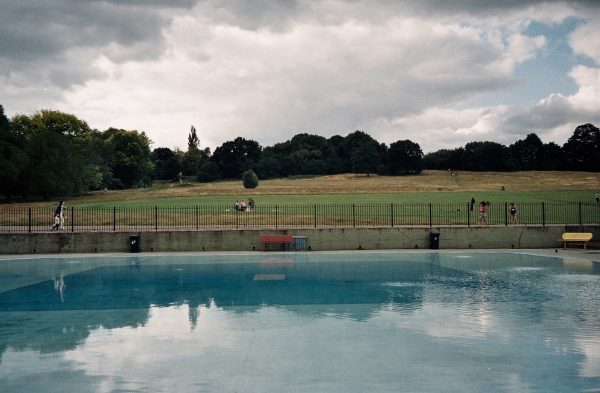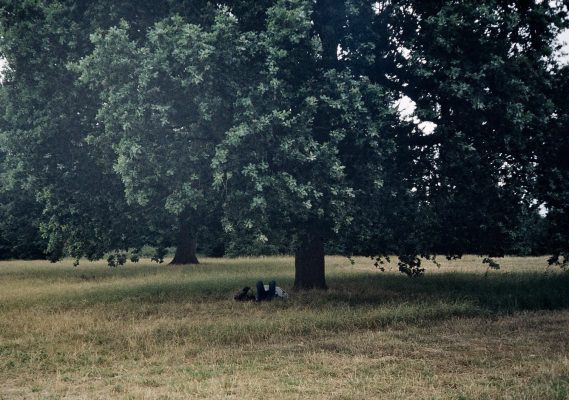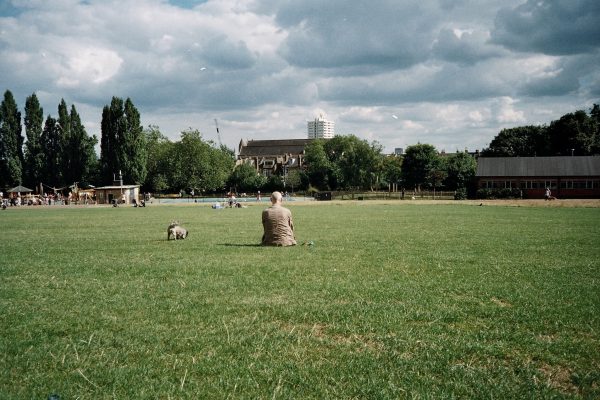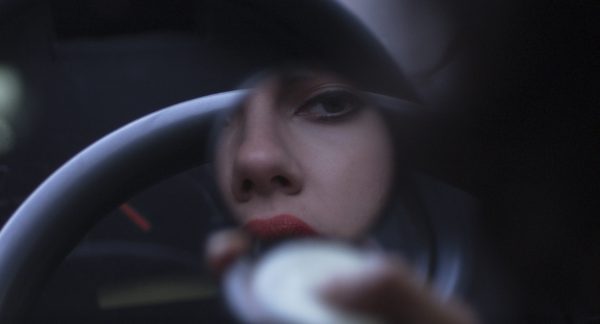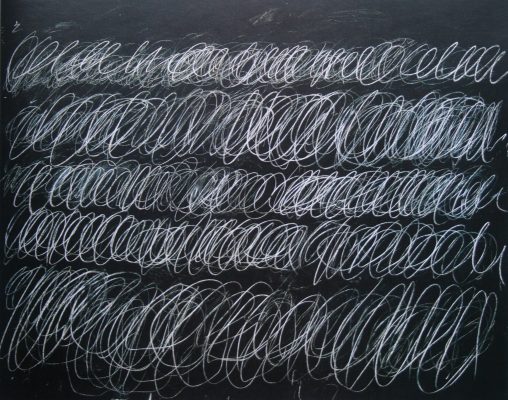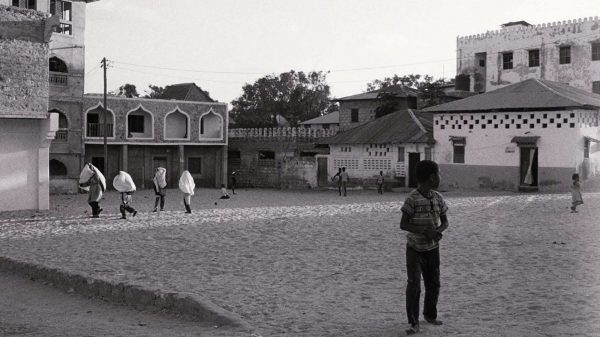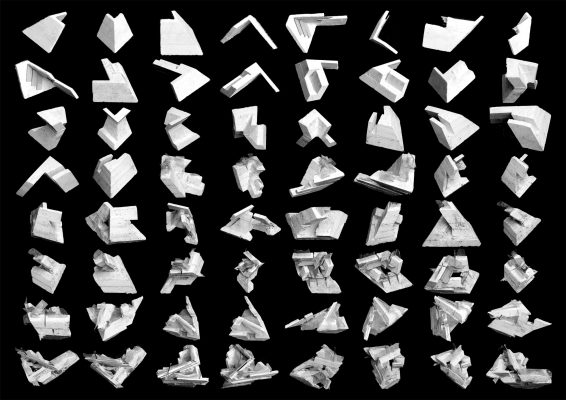One day in late 2011, waiting outside Green Park station, my gaze was drawn to an unexpected sight. Earlier that year a canopy of Portland stone had been erected over the entrance to the underground, part of London’s preparations for the Olympics, and through a rectangular frame in the structure, at the edge of the park, a tangle of colour appeared. A patch of wildflowers was growing there, next to the manicured shopping streets of Mayfair. A sign said the meadow had been planted as part of some scheme. This sounded like a paradox: I didn’t know that wildflowers could be planted, let alone meadows. I was struck by a correspondence between this artificial meadow and the rioting that had taken place in the city that summer, which had been framed as an irruption of wildness.
In his Politics Aristotle claims that humans surpass bees in their political nature, and philosophers have often used bees to describe the political nature of humans. Meadows, where the social desires of bees are fulfilled – if you can call them desires – have been overlooked as a form for thinking about politics. The wildflower meadow, increasingly endangered and artificially produced in the twenty-first century, describes a relationship between individual and environment that is both complex and immediate. The appearance of wildness in the city becomes a question of aesthetics, which is to say, a question of how the relationship between an event and its frame produces certain effects, and of politics, when an act of observation decides which events are wild and which are cultivated by human policy.
Wildflowers in the British Isles have historically been concentrated in areas of semi-natural grassland, often maintained for the production of hay for livestock, sometimes left uncultivated for other reasons and tramped through by grazing animals whose digestive systems redistribute seeds and produce the special diversity of the meadow. In the seventeenth century, the English mystic Thomas Traherne described meadows ‘more Divine than if Covered with Emeralds’. He saw the meadows as a book in which a message had been written: just as God makes water available to the field, so do humans receive an infinite stream of divine gifts from the heavens. The trappings of city life, Traherne felt, make humans unable to interpret God’s works. ‘How many Thousand Insects fly in the Meadows that we never dream of,’ he wondered, ‘the Glory of whose lives and uses are unknown?’ The meadows were alive, and we did not even know how.
The ancient grasslands of the British Isles underwent rapid decline during the twentieth century; their total area decreased by 97 per cent between 1934 and 1984. They were sacrificed to the Common Agricultural Policy, intensive farming and growing demand for cheap food. One of the species dependent of the meadows is the house sparrow, whose population in central London fell by 70 per cent between 1994 and 2001. It was once a commonplace that the fall of a sparrow was evidence of God’s providence, as it is written in the gospel of Matthew: ‘Are not two sparrows sold for a farthing? And one of them shall not fall on the ground without your Father.’ Now the sudden disappearance of the sparrows from central London is taken to be the trace of wider ecological collapse.
In 2009 the Royal Society for the Protection of Birds (RSPB) planted meadows in Green Park and seven other London parks – Kensington Palace Gardens, Waterlow Park, Parliament Hill, Peckham Rye, Perretts Field in Sutton and Tottenham Marshes – designed to increase food supply for the house sparrow population. A growing body of research in restoration ecology, the study of disappearing habitats and their artificial reproduction, has been devoted to the artificial cultivation of wildflower meadows. Botanists have described the difficulty of recreating the diversity of grasslands, which emerge as a complex web of relationships between flora and fauna, evolving over centuries. They say it is now difficult to plant a meadow that would be true to what was once growing and free of what are called alien species.
The RSPB meadow in Kensington Gardens has now disappeared, but the others are still alive. It is here that the bees come to fuck the flowers, Coco observes. A social scientist might be able to show how the lack of visible social organisation of these spaces produces a different kind of behaviour: they feel different from other spaces in the city, these paradoxical areas of wildness, planted at the heart of parks. Above the meadow in Parliament Hill, under an oak tree, a man lies between the legs of his partner. In Waterlow Park a transparent bag with a residue of MDMA crystals lies in the long grass. The meadow in Peckham Rye lies on a slight incline above the plane of the park, where a circus is packing up. At a distance, the meadow is an unremarkable patch of grasses and reeds, but as you enter it, there are a number of what appear to be discrete arenas, each one disclosing their inhabitants – a wild poppy shielded by ferns, or some other startling flower hidden close to the ground – only once you are within it.
The new wildflower meadows are not only for sparrows: a revolution has installed wildflower meadows in gardens around the world. A vanguard of gardeners has pioneered a style of intermingling plants that has superseded the tendency to plant blocks of single species and which has favoured perennials and particular species of wildflowers and grasses. A new naturalism, in garden design just as in modern art, reveals the artifice of an older aesthetic and replaces it with new aesthetic norms. The New Perennials or New Wave Planting movement has been led by Piet Oudolf, a Dutch nurseryman. By late August, the meadow in Parliament Hill is dying visibly, its grasses bleached and its thistles blackened by months of summer sun. Death is an effect of the perennial garden, as Oudolf has remarked: ‘You accept death. You don’t take the plants out, because they still look good. And brown is also a colour.’
The new naturalism is associated with moral and political goods, but its critics dismiss this as an illusion. Michael King, an English gardener associated with the movement, has commented that ‘any attempts to afford it greater worthiness by applying unnecessary credentials of ecological merit are dishonest.’ Oudolf’s most famous project is the High Line, a garden planted on a former railway track running down the western flank of Manhattan. Wildness in New York comes at the cost of glamour: the park was funded by the high-profile ‘Friends of the High Line’. A garden designer friend tells me that the naturalism of Capability Brown coincided with a period of financial difficulty for the English aristocracy, who were inspired to embrace an aesthetic that would allow them to employ fewer gardeners; likewise the new movement in garden design has flourished in a financial and moral climate where institutions want to make cuts while being seen to embrace the new ethical paradigm of environmentalism. What appeared to be wildness begins to reveal the structures of finance.
A monument to this new style of wildness is the Queen Elizabeth Olympic Park in Stratford, east London. It is the largest wildflower meadow ever planted in the British Isles, crossing an area larger than ten football pitches. The design was led by James Hitchmough and Nigel Dunnett, professors of landscape design at the University of Sheffield, who describe it as ‘extremely high-impact and attention-grabbing’. Their description echoes the metric of ‘impact’ that the Conservative government has invented for academic research. An ecologically sensitive landscape design created for the nation, aiming to inspire millions of visitors with new attitudes to planting, the park is the El Dorado of academic impact. One of its most impactful features is the ‘ribbon of gold’ – created in pot marigolds, tickseed and corn marigold hybrids – in a ring around the Olympic stadium. The design departs from restoration ecology by refusing to distinguish between native and alien species, a symbolic celebration of the city’s multiculturalism.
The perennials are packed in dense banks along the side of the canal in bright rows like aisles. The Park was designed to be ‘extremely flower rich, dramatic plant communities that would be seen as highly attractive by ordinary people’. The flowers have their colour even in December, like the tomatoes in Tesco Express. Hitchmough says ‘there’s no point in doing things that are very modest and gentle if you really want to engage people in the sense of nature.’ The qualities of modesty and gentleness, apparently, are unappealing to the ordinary people the designer imagines. The Olympic meadows celebrate a nature that is, implicitly, boastful and aggressive. This picture of nature is designed to compete with the colour intensity of the screen, the menu, the newsfeed. ‘Nature’ is obliged to emulate its rivals.
There was said to be a garden in the capital of the empire of the Incas where every petal, every blade had been cast in gold and silver. What the Elizabethan explorer Walter Ralegh said when he heard about the artificial meadow of the Incas could be said of London today: ‘There is nothing in this country that is not counterfeit in gold.’ Even the wildflower meadow has been created in the image of money. Where then is real wildness to be found?
*
It is by now a familiar sequence of events. Mark Duggan was killed by the police in Tottenham, north London, on August 4 2011. The police administration attempted to hide the circumstances of his death. On August 6 protests by the victim’s family and community were followed by rioting. Images of a police car on fire spread across social media and over the following four days, riots took place in east, southeast and south London, and then in Birmingham, Manchester, Salford, Liverpool and Nottingham. A generation too young to remember the race riots of the 1980s created the longest period of civil disorder in the UK since the Gordon Riots of 1780. Alarmed by the use of technologies to organise riots, the prime minister and head of the police claimed they were looking into the possibility of shutting down certain communication networks. As events began to unfold, others on social media interpreted the riots as kinds of wildness:
Hands up those who never had a youth club when they were kids, yet still managed not turn to into feral wild-cats! #LondonRiots #RiotExcuses
So if they ‘left West Ealing to the wolves’, can anybody tell me what’s happening in Hanwell? #londonriots
has left london…im guessing at the right time. Like wolves the antisocial scum comes out at night…cowards #londonriots
#londonriots this is all absurd…these rugrats are like a pack of wolves running wild! Just come with the #watercannon for their arses!!
#londonriots, the govT crapped on us & we lay down like dogs & took it. Now we riot like wild animals – OVER CHEAP TRAINERS & TV’S. REALLY?
#londonriots is like a pack of wild mongols sweeping across plain to take all the sheep, swine and cattle!
This style of commentary gave birth to the rumour that rioters had liberated wild animals from London Zoo.
The perceived wildness of the riots inspired a demonstration of lawfulness in the public sphere. On the morning of August 9 a crowd assembled in Clapham Junction, south London, not to riot but to clean up. The news was flooded with photographs of brooms held in the air. On social media there were calls for the army to police the streets. Some claimed that bad parenting was to blame. Some called for more discipline at home, in school, more severity in sentencing. Some claimed that the riots were cultivated by the public sector cuts carried out by the Coalition government, pointing to a prophecy made several years earlier that the closing of youth centres – under cuts imposed by the government’s austerity measures – would lead to riots. Some pointed out that, as university students, the prime minister and mayor of London had belonged to a secret society whose stated ambition was the destruction of property. While some could dismiss their actions as youthful mistakes, others would be punished with haste and unusual severity.
An event that is given no particular, social cause is taken to be universal, natural; those who do not believe that the riots were caused by social conditions, therefore, must call them wildness. The official government report on the riots, published in 2013, refuses to ‘explain away criminal behaviour’ and concentrates instead on policing and sentencing. It praises the justice system that had, in the first week after the riots, processed 1,000 defendants and handed out sentences that were on average four times more severe than usual. Looping back on its own logic, the report also claims that existing government policies, Sure Start and Youth Contracts, were already remedying the social causes of the riots that it had refused to recognise. This August marked the passing of five years since the riots, and the government has cut back on its own remedies: Sure Start has been drastically cut and Youth Contracts have been cancelled. Policing has not been reformed. Some commentators have predicted further riots but in 2012 the spectacle of rioting was replaced by the royal wedding, the Diamond Jubilee and the opening of the Olympics. Nonetheless, in 2014 the mayor invested in three water cannons, citing the possibility of more summer disorder. Future riots would justify the government’s interest in law and order, at the expense of other public services. It is in the government’s interests to obscure the social causes of rioting.
Reading the riots for their social causes comes up against a different problem, as a 2015 sociological study illuminated. The sociologists noticed that rioters interviewed after the event gave reasons that were different from the reasons that observers had assumed: they mentioned Gucci and Prada far more often than Mark Duggan. Reasons given in interviews, the sociologists decided, were not trustworthy: they might be ‘rationalisations’ after the fact. Instead, statistical analysis and demographic research would discover the ‘true’ social factors. The study found that participants lived in neighbourhoods marked by economic deprivation, proximity to prosperous areas, poor relations with police and cuts in public services. Ultimately, the sociologists could not reconcile the love of Gucci and Prada with social causes. This connection might be possible with reference to society in general, a society of widening, blatant divisions between rich and poor, divisions that could only be overcome by exceptional acts of appropriation and consumption. Instead, however, the sociologists call the riots a ‘sociological puzzle’. The solution to the puzzle turns out to be more social science. The study concludes, on an optimistic note, that more riots will be ‘fruitful events for future research’. More riots will explain the riots. Another solution would be to imagine the puzzle itself as a product of the act of rioting, which calls into question the regime of rationality to which social science belongs. Wildness would turn out to be an effect of the frame.
‘Keeping people safe is the first duty of government,’ David Cameron said in his first speech to Parliament after the riots. The riots, however, point to a division in the people, between those who are kept safe and those who are threatened by the state. Cameron’s speech evokes the social contract, a founding myth for classical political philosophy, which holds that humans once enjoyed a state of freedom that they gave up in order to receive protection by a sovereign. Rioting damages the myth of the social contract, challenging the citizens to question the original purpose of government. We are born into a society in which abstract rights are accorded equally but property accumulates unequally. In this society, whose existence appears indifferent to our consent, the destruction or appropriation of private property realises the option of refusal, and also, therefore, the possibility of consent. The accusation of wildness against the rioters may have been motivated by fear, but if their actions illuminate some repressed source of power, it must also have been envy.
Wildness is always a subjective judgment, identifying something that inevitably takes human form as soon as it is identified. This social judgment implicates the accuser in a long history of racism and hatred of the poor. The riots are too easily intelligible to observers who name them as wildness – it may be wildness to cross the borders of the law without knowing it but it is something else to break the law intentionally – but they are too puzzling to those who look for their politics. The 2011 riots were political events that cannot be explained politically. This contradiction illuminates a division at the heart of politics: some people tend to be its subjects, others its objects; some inside the frame, others outside; some wild, others rational. This division would have to dissolve before the riots could be understood as a political event. Only then would it be possible to talk about our social life in such a way that would make wildness appear everywhere and in no particular place – like the imagined animals, liberated from the city zoo, pacing the streets.
*
After the 2011 riots, the authorities declared they were considering cancelling the Notting Hill Carnival, perceiving some connection between the two events, but eventually it went ahead as usual at the end of August. Carnival is the form and expression of individual and group desires that are in excess of social acceptability and which constitute an important exception to normal governmental time. Since Mikhail Bakhtin wrote about carnival’s exceptional status in the early twentieth century, theorists of culture have discussed its significance: does carnival threaten the logic of government or strengthen it? What happens in carnival may be a lesson about the relationship between society and its others. Carnival is an experience of human bodies at their greatest voluntary density, and it gives rise to the most extreme social feelings, misanthropy and joy.
Like the Mayor of London, William Wordsworth also saw a connection between rioting and carnival. In the late eighteenth century, the poet visited Bartholomew Fair, the largest annual summer fair in London, which took place on the eastern edge of the city from the twelfth until the nineteenth century. Years later, in three enormous sentences of The Prelude, Wordsworth returns to the carnival.
All moveables of wonder, from all parts,
Are here—Albinos, painted Indians, Dwarfs,
The Horse of knowledge, and the learned Pig,
The Stone-eater, the man that swallows fire,
Giants, Ventriloquists, the Invisible Girl,
The Bust that speaks and moves its goggling eyes,
The Wax-work, Clock-work, all the marvelous craft
Of modern Merlins, Wild Beasts, Puppet-shows,
All out-o’-the-way, far-fetched, perverted things,
All freaks of nature, all Promethean thoughts
Of man, his dullness, madness, and their feats
All jumbled up together, to compose
A Parliament of Monsters.
The objects of the sentence teem under the pressure of a disgust that is also a kind of fascination, appearing in a flow of subordinate clauses that threaten to multiply to infinity. This culminates in a phrase – ‘A Parliament of Monsters’ – that expresses an ancient hatred of democracy. Carnival inspires the poet to long for an absent authority, but eventually he is able to compose himself, to perceive order in the crowd and an ‘undersense’ that locates universal principles in the flux of particular things. Wordsworth can imagine himself within carnival only once he can find the universal – ‘the Spirit of Nature’ – in city life. To enter carnival is to negate misanthropy, submit to a maximised social inconvenience and find joy in conformity with a crowd. If you are in the city, you are part of carnival, whether you like it or not.
We are not in control of language, which always exceeds our intentions, and poetry is somehow able to submit to this fact while constituting an important exception to it, reminding us that it is not the individual that makes meaning but society, that whenever the supposedly rational individual speaks, he is not in control of his meaning. And it is not only poetry that reveals this but any writing that welcomes the apparently causeless events of wildness internal to language and permits itself to be adorned by them, which in turn leads us to see it is possible to live without trying to expel wildness from social life. Only this way of living could enter the carnival and find a way through it.
On the official leaflet for 2016 a carnival reveller dances with the police. For the authorities, carnival is staged as a civil partnership of Apollo and Dionysus. Carnival makes wildness look like conformity; to conform is to have everything you need and want. For the participants, what carnival means is not for us to say.
*
Teaching in the correctional facility you learn something about wildness. In the orientation session, an officer tells the teachers that the inmates are wild animals. Another officer, spontaneously, tells us the students do not deserve to be called students. But the young men who walk into class are friendly, confident, relaxed. They slap each others’ palms, shake our hands, print and sign the attendance sheet and slip their legs under a desk in one quick movement. The desk is a slab of veneer plastic attached to the arm of a small steel-plated chair, made for the bodies of young boys. The teachers and students sit in a wide circle of desks, leaning our whole right side on the armrest (no left-handed men in prison) and our thorax bulges out of the little space between the desk and the chair. You could stand up and the whole thing would hang off your hips like a silly belt.
They are in class to better themselves, to talk about books, to get a degree inside and get credits so they can get a better degree when they get out. They sometimes mention their past lives but they don’t often say what happened. B. taught himself to read inside, started reading books of the films he had seen on the street. Bored of science fiction, he wants more. He’s reading Dante, teaching himself Italian, which is not too different from Spanish. C. wants to learn to identify a sonnet but after a few weeks he stops coming to class and we never find out why. D. brings the political writings of Kant to class, it sits on top of his other books. They often bring books to swap with each other, pulling them out when they have finished a task. We tell them to put the books away, move on to the next task.
They are learning Latin and Arabic, and Mandarin, as soon as they can get an instructor. They slouch in their chairs, exhausted. They are so busy, they have never been so busy. They are tired of working, they have never worked so hard, tired of staying up watching TV with their bunkie. They fidget, bored, jog their legs under the table, unwind a braid, rewind it. E. comes in one week, his forehead braided in stripes that radiate from the center like a rising sun. Some students come in with different hair each time. F. is the barber and sometimes he doesn’t come to class at all because of the demand.
They talk about things that happen inside, things we don’t understand. In the entrance hall a poster advertises a ‘prison rape audit’. One day the students are late, and I pace up and down the aisles between the desks in Classroom 2. The students file in twenty minutes late and I ask, so that they know I am angry and I care about the lesson, why are you late. They tell me the whole place has been on lockdown since yesterday, there was a fight in the gym between the Bloods and the Crips.
They are bored of Hamlet by the third week of reading it. They have understood the plot and they are bored of it. One afternoon, when they are meant to be planning their final papers, F. is listless, distracted, talking to his neighbours, who aren’t listening to him, talking to himself:
‘Do you know what a sovereign citizen is?’
‘I can guess,’ I reply.
‘You can secede from the constitution, become your own country, so long as you don’t make trouble for anyone else.’
‘But isn’t the law written so it’s only when you’re bothering someone else that you’re breaking it?’
This must have felt so far from his reality as to seem provocative, but he just says: ‘I’m sick of this place.’
‘Think about Hamlet,’ I say. ‘He lives under a government that is cruel, arbitrary, that he hasn’t chosen, in a country where he is denied the rights he was born to. Hamlet develops a language to describe this state, a way of speaking that the agents of the state will not understand. It’s insane or sounds like it is. It infects his listeners. Maybe you could write your paper about this.’
F. is quiet for a moment, and then he says: ‘Why weren’t we talking about this all along?’
G. writes his paper about wildflowers. Towards the end of Hamlet, Ophelia enters, dispersing flowers as gifts to the corrupt king and his court. What she is giving, G. works out, is advice: rosemary for her brother, who seems to have forgotten about the death of their father; fennel for anyone who flatters the king, or for the king, who surrounds himself with flatterers; the violets, which stand for fidelity, have all died; columbines, meaning infidelity or sadness, for the queen, who has remarried too quickly. ‘You must wear your rue with a difference,’ Ophelia says. You do not know how to mourn, she is telling them. The politicians of the court are not able to receive the advice that the wildflowers are.
We are discussing another story when F. says something that I can’t at first understand. In the story a lawyer – you imagine a well-fed, liberal, good-humoured man – hires a new clerk called Bartleby to copy legal documents. At first the new employee is diligent in his copying, but one day he refuses to work at all, justifying this decision with some obscure explanation. The lawyer tries to reason with Bartleby; he coaxes, bribes, and, finally, fires him. But still he refuses to leave the premises. The lawyer, who dislikes violence, decides to move offices rather than evict him. But he remains intrigued by the man, who doesn’t seem to be motivated by reason or self-interest. I ask the class why the lawyer is so intrigued by his employee: what is it that makes him care about Bartleby? ‘He’s lost,’ F. says, as if it’s obvious. It is only now that I realise wildness belongs to the observer, never the observed.
*
After carnival, one year, H. and I end up at a party in a hot little apartment at the top of a tall, white house. There aren’t many people at the party and they are all sitting in armchairs and deep sofas. Swing jazz is playing on an old-fashioned record player. H. leaves me to talk to someone and I sit down. Sitting on a sofa there is a beautiful young man with blond hair, wearing short white tennis shorts and brown leather shoes. His legs are long, white and slender. One is crossed over the other, and the effect of this is beauty of an extreme, shocking variety. The young man is talking to a friend who is not as beautiful as he is. He sits back, she leans in. I am sitting next to them and they are talking and I enter the conversation to correct him on some point of fact. It turns out that he studies at the same kind of elite institution as me. So I correct him, he disagrees with my correction and we agree to disagree. I mention teaching at the correctional facility – whether to impress or correct them, or both, I can’t remember.
‘You should talk to him about prison,’ his friend says, excited. ‘It’s his favourite subject. He says criminals should have longer sentences. They should have more time outside, more exercise, and their sentences should be longer.’
I ask the young man a few questions about his beliefs, still polite, and he confirms what his friend has said: he talks passionately about the logic of the punishments he imagines. I consider his degree, his elegance and conviction, and imagine his political career could be unstoppable. Then I tell him, quite loudly, you are terrifying. Suddenly H. is sitting next to me. She pulls me out of the apartment, down the stairs and then I am in tears on the street. He doesn’t know what it’s like to have someone you love somewhere you can’t protect them, I say.
At that moment I understood there is a class of people who can’t understand what it is to suffer in the state invented for them, who will never suffer the punishments they dream up, who must always project wildness outside themselves. It is a class you could stake your life outside, whoever you are.
*
We are here because we don’t totally resent other people. We are able to walk, to hold our own, which means we don’t have to be scared.
At the borders police are standing in our path and we must flow among them to enter. Inside the crowd grows, standing still, flowing through ourselves. Involution. A serpent eating its tail; a numberless, moving whole.
Then the apparition of these faces, gazes, creases, habits, wrinkles, emotional history, irritation, impassivity, balance inquiries, tears, grime, history, low battery, footwork, eyebrows, value, biceps, bra-straps, regrets, arrests, garage, losses, sisters, lashes, jungle, capital, dancehall, navels, signal, submission, crushed cans, governance, glitter, piss, wings, pushes, hoardings, patriarchy, keys, generosity, fat; waves of caps, backpacks, flags, bumbags, prams, jackets round waists, foundation, accusations, dimples, filters, bandanas, sportswear, nostalgia, musculature, helicopters, cognac, cheeks, pecs, calm, exes, arms round necks, loveliness, glass, palms, hoops, youth, exuberance, beauty, heterosexuality, chicken and rice, catcalls and replies, riot police, impotence, distinction, no data, exhaustion, desire.
You have to accept everything, what you love and hate, every incarnation of life.
